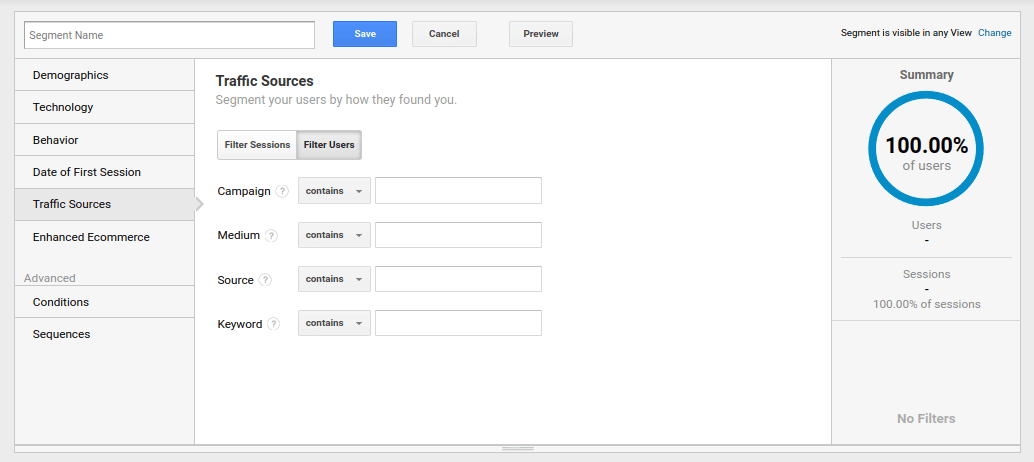Utilizing Remarketing in Google Analytics: A Comprehensive Overview
Using remarketing in Google Analytics uses services a calculated edge in getting to out to potential consumers. This overview will certainly shed light on the essential steps entailed in using the complete possibility of remarketing in Google Analytics, leading to enhanced advertising and marketing results.
Recognizing Remarketing in Google Analytics
Remarketing in Google Analytics permits services to purposefully target users that have formerly connected with their website or mobile application. By leveraging information from Google Analytics, organizations can develop tailored remarketing lists based on user habits, such as web pages gone to, actions taken, or certain objectives achieved. This effective tool allows businesses to re-engage with users who have actually revealed interest in their services or items, inevitably boosting the possibility of conversion.
Comprehending the different kinds of remarketing methods is vital for an effective campaign - What Is “Remarketing” In Google Analytics?. Google Analytics supplies numerous options, consisting of basic remarketing, dynamic remarketing, and remarketing checklists for search advertisements (RLSA) Each kind offers an one-of-a-kind purpose and can be tailored to satisfy certain marketing objectives
Furthermore, examining the performance of remarketing projects is vital for enhancing outcomes. Google Analytics supplies valuable understandings right into the performance of various remarketing approaches, permitting companies to make data-driven choices and refine their targeting approach. By constantly keeping an eye on and changing remarketing initiatives based upon analytics information, organizations can take full advantage of ROI and drive success in their advertising and marketing initiatives.
Setting Up Remarketing Projects

After establishing target market lists, the following action is to connect Google Analytics with Google Ads. By linking these two systems, companies can effortlessly transfer audience checklists from Google Analytics to Google Advertisements for remarketing functions. This assimilation permits more specific targeting and much better project efficiency.
Once the accounts are connected, companies can create remarketing campaigns in Google Advertisements utilizing the target market provides previously specified in Google Analytics. These campaigns can be tailored with particular ad creatives, messaging, and bidding process techniques to properly re-engage with past site visitors and drive conversions. By complying with these steps, services can leverage the power of remarketing to boost their advertising initiatives and enhance ROI.
Making Use Of Audience Segmentation Methods

Predefined sectors in Google Analytics allow you to rapidly examine usual audience classifications fresh users, returning users, or individuals that finished a specific goal on your site. Personalized segments, on the other hand, enable you to produce one-of-a-kind sectors based on particular requirements that are essential to your business objectives. Dynamic remarketing listings immediately change based upon customer actions, showing customized advertisements to individuals that have communicated with your website specifically means.
Studying Remarketing Performance Metrics
Upon assessing the efficiency of remarketing projects in Google Analytics, the evaluation of crucial browse around this site performance metrics gives important insights right into audience interaction and conversion rates. By diving right into metrics such as click-through prices (CTR), conversion prices, price per procurement (CPA), and return on ad invest (ROAS), marketers can gauge the success of their remarketing initiatives. CTR suggests the percent of customers that clicked on the ad after viewing it, mirroring the advertisement's significance and charm. Conversion rates gauge the portion of individuals who finished a preferred action, such as purchasing, after clicking the ad. CPA discloses the typical cost sustained for each and every conversion, aiding evaluate campaign productivity. ROAS, on the various other hand, quantifies the revenue produced for every buck invested in marketing. Analyzing these metrics enables marketing experts to enhance projects, refine target market targeting, and assign budgets properly to improve overall remarketing efficiency.
Optimizing Remarketing Methods
When refining remarketing strategies in Google Analytics, concentrating on target market division is critical for accomplishing project success. By dividing your audience into certain sectors based on their behavior, demographics, or rate of interests, you can tailor your advertisements extra efficiently to every group. This targeted method raises the likelihood of engaging individuals that have actually currently revealed rate of interest our website in your service or products, leading to higher conversion prices.
One more crucial aspect of optimizing remarketing techniques is constantly testing and refining your projects (What Is “Remarketing” In Google Analytics?). A/B testing various ad creatives, messaging, or offers can aid you recognize what resonates best with your target market and drives one of the most conversions. By analyzing the efficiency of these tests in Google Analytics, you can make data-driven choices to optimize your remarketing initiatives better
Furthermore, leveraging dynamic remarketing can significantly boost your campaign results. This feature permits you to reveal tailored advertisements to customers based upon their past interactions with your website, showcasing services or products they have previously viewed. By supplying customized web content to customers based upon their habits and interests, dynamic remarketing can help increase involvement and drive conversions.
Verdict
To conclude, taking advantage of remarketing in Google Analytics is a tactical approach to target customers that have formerly engaged with a website. By developing personalized audience lists and making use of target market segmentation techniques, businesses can enhance remarketing projects for enhanced conversion rates. Assessing efficiency metrics and continuously click here to find out more maximizing methods are essential for optimizing the effectiveness of remarketing initiatives.
Google Analytics offers numerous choices, including common remarketing, dynamic remarketing, and remarketing checklists for search ads (RLSA)After setting up target market lists, the following step is to connect Google Analytics with Google Ads. By connecting these two systems, companies can flawlessly transfer audience listings from Google Analytics to Google Advertisements for remarketing functions.As soon as the accounts are linked, services can develop remarketing campaigns in Google Ads utilizing the target market lists formerly specified in Google Analytics.When refining remarketing techniques in Google Analytics, concentrating on audience division is extremely important for achieving project success.